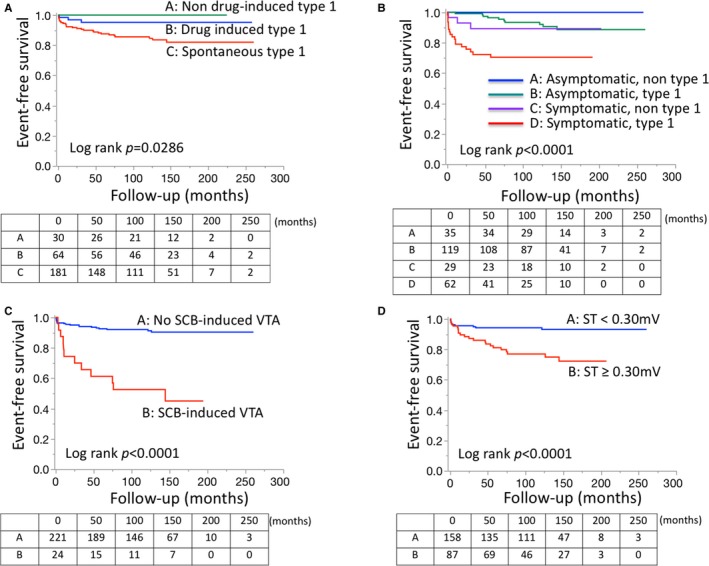Figure 4.

Kaplan–Meier analysis of fatal arrhythmic events. A, Event‐free survival by ECG types including non–type 1, drug‐induced type 1, and spontaneous type 1. Patients with spontaneous type 1 ECG had a worse prognosis than did patients without spontaneous type 1 ECG. No arrhythmic event occurred in patients without type 1 ECG. B, Event‐free survival by symptoms and ECG types in patients with spontaneous or drug‐induced type 1 ECG. Symptomatic patients more frequently experienced arrhythmic events than did asymptomatic patients. C, Event‐free survival by pilsicainide‐induced ventricular tachyarrhythmias (VTAs) in patients with spontaneous or drug‐induced type 1 ECG. Pilsicainide‐induced VTAs were associated with increased risk of fatal arrhythmic events. D, Event‐free survival by degree of ST elevation in patients with spontaneous or drug‐induced type 1 ECG. Patients with marked ST elevation (≥0.3 mV) in lead V1 after administration of pilsicainide had a significantly higher risk of fatal arrhythmic events than did patients with less ST elevation. Tables under the survival curve show the number of patients at risk. SCB indicates sodium channel blocker.
